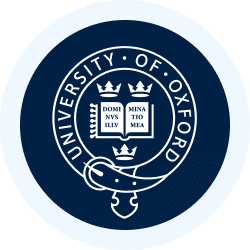Very Short Answers - Stars and the Solar System | Natural World for PAT PDF Download
Q. 11. What is sun?
Ans. The sun is a star.
Q. 12. Name the planet nearest to the ‘sun’.
Ans. Mercury.
Q. 13. Name the planet nearest to the earth.
Ans. Mars.
Q. 14. Name the planets opposite side of the earth.
Ans. Mars and Venus.
Q. 15. Name the star which is nearest to the earth.
Ans. Alpha Centaury.
Q. 16. Write the name of any two constellations.
Ans. Great Bear and Orion.
Q. 17. Which planet has rings around it?
Ans. Saturn.
Q. 18. Name the planet farthest from the sun.
Ans. Neptune.
Q. 19. Write the name of astronaut who first landed on the moon.
Ans. Neil Armstrong.
Q . 20. When did Neil Armstrong land on the surface of the moon?
Ans. On July 21, 1969.
Q . 21. What is the speed of light?
Ans. 300000 km per second.
Q . 22. Write other name of constellation Great Bear.
Ans. Saptarishi.
Q . 23. How many bright stars are there in Orion?
Ans. Seven or Eight.
Q . 24. What is the other name of Orion?
Ans. Hunter.
Q . 25. Which is the nearest star to the earth?
Ans. Sun.
Q . 26. Which star is called morning or evening star?
Ans. Venus.
Q . 27. Which colour is seen on earth from space?
Ans. Blue green.
Q . 28. Which planet is called Red planet?
Ans. Mars.
Q . 29. Which is the smallest planet?
Ans. Mercury.
Q . 30. Which planet is yellowish in colour?
Ans. Saturn.
Q . 31. Which planets are called inner planets?
Ans. Mercury, Venus, Earth and Mars.
Q . 32. Which planets are called outer planets?
Ans. Jupiter, Saturn, Uranus and Neptune.
Q . 33. Write the name of artificial satellite.
Ans. INSAT, IRS, Kalpana-I.
Q . 34. What is responsible for the change in season on earth?
ns. Tilting of earth.
Q . 35. Name the planets which have no moon.
Ans. Mercury and Venus.
Q . 36. Name the planet where life exists.
Ans. Earth.
Q . 37. What is the path on which planets revolve around the sun called?
Ans. Orbit.
Q . 38. How many planets are there in the solar system?
Ans. Eight.
Q . 39. Name the planet where there is no carbon dioxide.
Ans. Mercury.
|
3 videos|115 docs|23 tests
|
FAQs on Very Short Answers - Stars and the Solar System - Natural World for PAT
| 1. What is a star? |  |
| 2. How do stars form? |  |
| 3. What is a solar system? |  |
| 4. How many planets are in our solar system? |  |
| 5. What is the role of the sun in the solar system? |  |

















